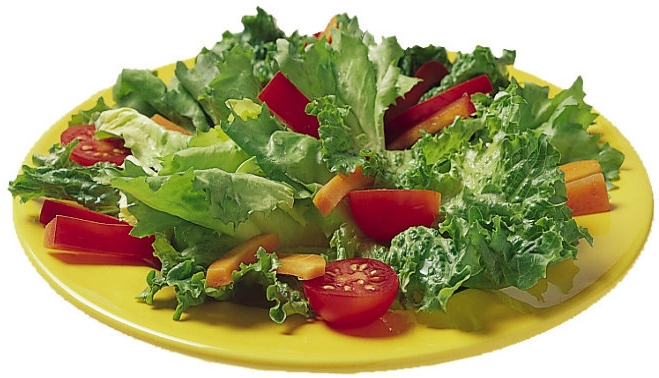 Choosing salad over a sandwich or burger always makes for a healthier lunch, right? Thanks to hefty portion sizes, extravagant toppings, and certain brand name salad dressings that pack up to 200 calories and 20 grams of fat per serving, this may not always be the case. We tracked down nutrition information for the leading store-bought brands of ranch, thousand island, Caesar, and Italian/ vinaigrette salad dressings, and ranked them each, leading up to the one that has the most fat and calories (Credit: wikipedia commons).
Choosing salad over a sandwich or burger always makes for a healthier lunch, right? Thanks to hefty portion sizes, extravagant toppings, and certain brand name salad dressings that pack up to 200 calories and 20 grams of fat per serving, this may not always be the case. We tracked down nutrition information for the leading store-bought brands of ranch, thousand island, Caesar, and Italian/ vinaigrette salad dressings, and ranked them each, leading up to the one that has the most fat and calories (Credit: wikipedia commons).
Further, most people tend to ignore their salad dressing's reported serving size, which is usually only two tablespoons. If the only way you can enjoy a salad is by drenching it in a cup of dressing, then you may not be getting the healthiest lunch you can.
While you should remain wary of store-brand salad dressings with high fat and calorie contents, nutritionists remind salad-lovers not to shy away from fat altogether, and warn that low-calorie or low-fat dressings may not always be a healthier option than their full-fat counterparts.
RELATED: Make Salad Dressings Healthier
Nutritionish Keri Glassman cautions that what "light" dressings save on calories and fat they often more than make up for in sodium and sugar. We also ranked these same varieties of dressings according to which ones had the least fat and calories. While these may appear to be healthy alternatives, the sodium level is worth paying attention to. Glassman further asserts that "light" and "fat free" dressings are often the most common places to find high fructose corn syrup which she deems a "diet no-no."
RELATED: Why Size Matters for Your Salad
Further, low-fat salad dressings prevent the body's ability to absorb the carotenoid antioxidants in salad greens and tomatoes, thus greatly diminishing a major health benefit of eating salad. A Purdue University study found that certain healthy fats -- like those in olive oil -- were necessary to absorb the full benefits of the other vegetables in the salad.
So, what should you dress your salad with instead? Glassman recommends choosing dressings with the shortest list of recognizable ingredients, and prefarably an oil-based viniagrette.
Next time you reach for your favorite salad dressing, make sure to check the nutrition label before making a decision. Alternatively, try making your own dressing at home using healthy fat sources like avocado and olive oil.
- Ally Bruschi, The Daily Meal
More from The Daily Meal:
10 Most Pointless Salad Dressings
Make Salad Dressings More Interesting
Easy and Fun Summer Salads
10 Easy Salad Recipes Worthy of a Meal
